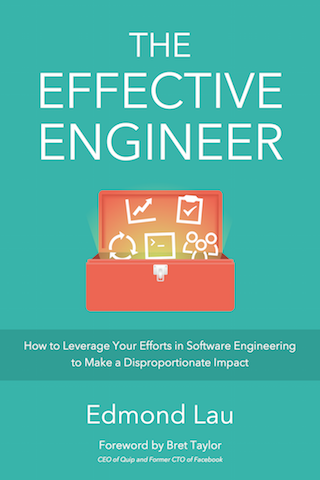Make If-Then Plans to Get More Things Done

In the 1990s, Psychology Professor Peter Gollwitzer conducted a study into the science of motivation. At the University of Konstanz in Germany, he asked students who were on their way to final exams if they would volunteer to participate in a study to write a Christmas essay of how people spend their holidays. Students who agreed were told that they had to mail in their essays within two days of Christmas. Half of the students were also asked to specify when, where, and how they would write the essay. Of the students who specified these “implementation intentions,” 71 percent of them mailed in their essays; of the other half of students, only 32 percent did. That’s more than twice the completion rate for a relatively minor tweak. 1 2
The study reveals just how powerful a few minutes of planning can be in terms of overcoming our natural tendency to procrastinate.
Fight procrastination with if-then plans
Why did that little bit of planning make such a large difference? In her book Succeed, Dr. Heidi Grant Halvorson sheds some light as to how and why a simple practice called if-then planning can help us be more productive. In an if-then plan, we identify a situation where we will take a step toward a certain goal. So examples might be “if it’s 9am in the morning, then I’ll go running” or “if it’s Sunday after lunch, then I’ll catch up on my emails.”
Making these types of if-then plans can be helpful for achieving our goals, whether it’s a long term goal to build up knowledge and skills in mobile development (if it’s right after dinner, then I’ll watch an Android lecture) or a more short-term goal like fixing an old bug (if it’s after my 3pm meeting, then I’ll investigate this problem). Halvorson explains that the “planning creates a link between the situation or cue (the if) and the behavior that you should follow (the then)” and so when the cue triggers, the “then” behavior “follows automatically without any conscious intent.” 3
The subconscious followup is important because a major reason why we procrastinate on the things that we’d like to get done is due to the initial reluctance and activation energy required for us to get started. That reluctance leads us to rationalize why it might be better to do something easier or more fun. When we make if-then plans and decide what to do ahead of time, we’re much more likely to consider the long-term benefits associated with a task whereas, in the moment, the short-term value that we get from procrastinating can often dominate. 4 This explains why in other studies, if-then planning has increased goal completion rates for people like high school students studying for the standardized PSAT tests, dieters trying to lower their fat intake, smokers trying to quit, people trying to use public transportation more frequently, and many others. 5
A particularly effective way that I’ve found to use these if-then plans is in making better use of small chunks of time. Paul Graham explains in his essay “Maker’s Schedule, Manager’s Schedule” that people who make things tend to prefer longer chunks of time in order to be productive. I’ve found that when I’m programming or when I’m writing, that 20 minutes or maybe even an hour often isn’t enough time to get into a productive state of flow and make a good dent. Something that’s closer to 3-hour chunks would be more ideal. The reality, however, is that with all of life’s daily interruptions, we still get stuck with small chunks of time during our day. We might have 20 free minutes before the next meeting, spend half of it trying to decide and pick what to do, and then end up surfing Hacker News or Reddit when it doesn’t feel like we have enough time to get started.
An if-then plan that I’ve found to be effective to is to make an “if I only have 20 minutes before my next engagement, then I will do ____.” I maintain a list of short tasks that I need to get done and that don’t require a long chunk of uninterrupted time, and I use them to fill in the blank. Things that have worked well for me in that blank include finishing a code review, writing interview feedback, responding to emails, making a decision that’s blocking a project, investigating a small bug, or writing an isolated unit test. I actively postpone working on those types of small tasks during longer chunks of time when I know that I have harder projects that can fill those limited slots.
Develop routines to reduce transaction costs
An if-then plan for an activity, when repeated regularly, becomes a routine. The power of a routine is that it reduces what Matt Might calls the mental “transaction costs” 6 associated with an activity. Rather than hitting a motivational hurdle each time we’re considering the activity, we build and schedule a routine so that we don’t have to repeatedly summon the willpower to do the activity.
While I was an engineer at Quora, one of the hardest but most important tasks that I needed to do every day was to prioritize what I actually wanted to get done. There always tends to be more things to get done than there’s time to do, so figuring out what matters most is really important. The problem is that prioritization is not a fun activity – it takes time, is mentally taxing, and provides little visible output compared to building something – and yet, it provides an incredibly high return on investment (ROI) because it determines the activities and hence ROI for the rest of the day.
To help make it easier on myself, I converted the daily prioritization into a routine. On my walk to work in the mornings, I would swing by a coffee shop where, along with getting my daily dose of caffeine, I would spend 5-10 minutes reviewing my to-do list to figure what things I actually wanted to get done during the day. The routine was a mind-bogglingly simple practice, but it ensured that I was consciously prioritizing what to work on every day.
Part of the reason why the Lift is getting positive buzz is because it’s a simple tool to help people adopt the routines they need to get things done. And while each day might not generate progress that’s extremely meaningful, over time, these routines are what lead to the inspiring stories that you hear of Karen Cheng learning to dance in year by practicing every day or Jennifer Dewalt learning to code by building 180 websites in 180 days.
Frank Wieber and Peter Gollwitzer. “Overcoming Procrastination through Planning” ↩
Elizabeth J. Parks-Stamm and others. “Action Control by Implementation Intentions: Effective Cue Detection and Efficient Response Initiation” ↩
Heidi Grant Halvorson, Succeed: How we can reach our goals, p177-180. ↩
Succeed, p14-20. ↩
Succeed, p175-177. ↩
Matt Might, “Productivity tips, tricks and hacks for academics” ↩

“A comprehensive tour of our industry's collective wisdom written with clarity.”
— Jack Heart, Engineering Manager at Asana
“Edmond managed to distill his decade of engineering experience into crystal-clear best practices.”
— Daniel Peng, Senior Staff Engineer at Google

“A comprehensive tour of our industry's collective wisdom written with clarity.”
— Jack Heart, Engineering Manager at Asana
“Edmond managed to distill his decade of engineering experience into crystal-clear best practices.”
— Daniel Peng, Senior Staff Engineer at Google


















Leave a Comment